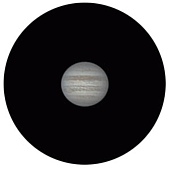exit pupil

When you divide the diameter by the magnification you get a value called the exit pupil, which is the width of the beam of light that leaves the binoculars through the eyepieces (those small lenses through which you observe) passing through the observer's pupil. For "10 x 50" binoculars the exit pupil would be 5 mm (50/10=5). The important thing here is that if the exit pupil is greater than the observer's pupil dilation, there will be a percentage of wasted light that will not reach our retina. Since an observer's pupil commonly opens about 5 mm in dark sky conditions, it is recommended that the exit pupil of the binoculars measure between 2.5 and 5 mm.
Field of view

On many binoculars you will find something like “80 m or 1000 m”, which is the width we see in a view from 1000 m. To observe the sky with binoculars we will have a field of view expressed in degrees. 1º (one degree) is the equivalent of 2 times the diameter of the full moon. 7º of real field is equivalent to 14 full moons. The models with the highest magnification have between 3º and 5º, the models with a wide field (wide angle) can have 8º or 10º. In any case, the objects that will be within our reach with a typical field of view of binoculars are: star clusters (open and closed), nebulae, comets, bright galaxies, planets, the Moon and the Sun (with the appropriate filters for the case, or better still, using the projection technique).


